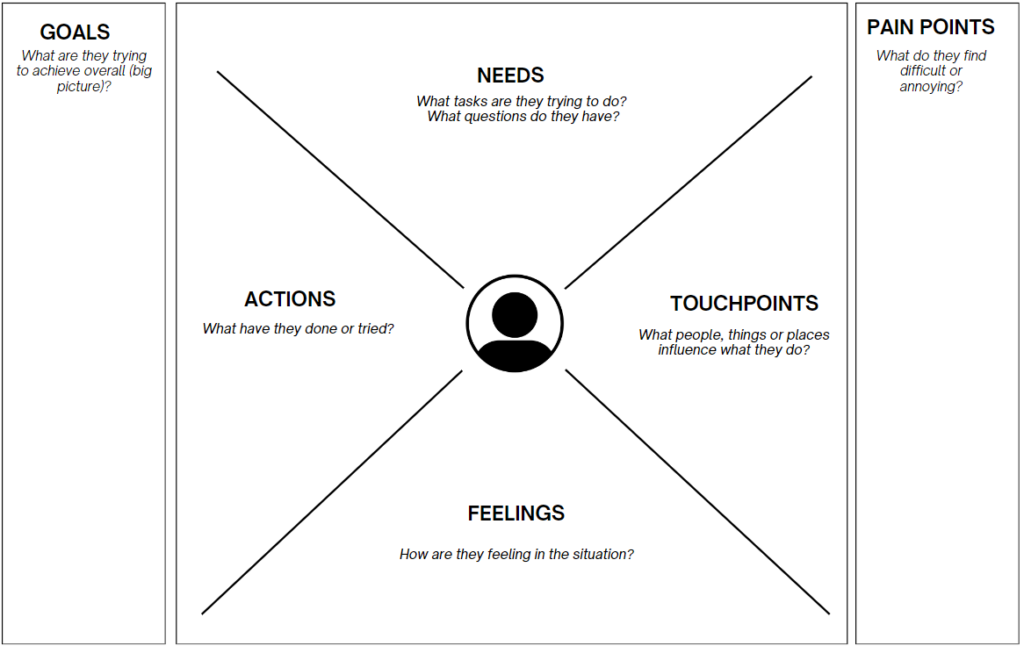- Guides
Combining Paid Media, Data & Strategy for Charities
It’s a compelling notion that 'behind every great customer experience is a great employee experience'. But does that match reality?
Empathy mapping is a useful tool to help you map-out your charity's different audiences
In the often challenging world of UK charity marketing, understanding your audience is not just a goal—it’s a necessity. That’s where empathy mapping comes in. It’s a tool that helps you step into your audience’s shoes and see the world from their perspective. Let’s dive into why empathy mapping is crucial for capturing insights and how it can transform your communication strategies.
Empathy mapping is a visual and collaborative tool used to articulate what we know about a particular type of user. It externalises knowledge about people in order to:
An empathy map is divided into sections that reflect different aspects of the user’s experience. Typically, these include:
The central idea is to identify key insights and opportunities based on a deep understanding of the user’s emotional and physical environment. You can then use this to make improvements – for example on your website – or to give you ideas for communications activity, including messaging and formats.
Below is an example of a blank empathy map template – you can print these out (A1 size), draw them on large paper or even on a white board and then use Post-it notes to capture the insights.

For charities, empathy maps are particularly powerful. They help you grasp the motivations behind supporters’ actions, tailor communications to resonate with different segments, and design campaigns that hit home on an emotional level. By understanding the nuances of your audience’s experiences, you can craft messages that truly speak to them.
Also, you can use them to build up personas of your key audiences. The maps capture key behavioural and attitudinal information, which you can add to and include demographic data, to then design a persona.
Empathy mapping is also a great way to bring together people from across the organisation, to share their valuable knowledge and insights in a collaborative way.
To get started with empathy mapping, gather a diverse group from your internal team. This might include people from your Comms team, fundraising, supporter engagement and even frontline people dealing directly with service users.
Here’s a simple guide to conducting your session:
1. Define your audience segment: Be specific about who you’re empathising with. You would create a different map for each segment (e.g. Individual givers, corporate donors, families etc).
2. Fill out the empathy map: Use data, insights, and educated guesses to populate each section with Post-it notes directly onto the map.
3. Identify key insights and opportunities: Look for patterns and themes that emerge.
4. Translate insights into action: Decide how you’ll apply what you’ve learned to your marketing efforts.
Remember, the goal is to build as complete a picture as possible of your audience’s inner world.
To maximise the benefits of empathy mapping, consider these tips:
Empathy mapping is more than just a tool; it’s a pathway to deeper connection with your audience. By embracing this approach, charities can ensure their messages are not just heard, but really connect with people.
Want support in running an empathy mapping workshop?
Insights, thoughts and ideas
Explore our latest thinking to help you navigate digital
Latest case studies
See how we've helped organisations make their potential possible